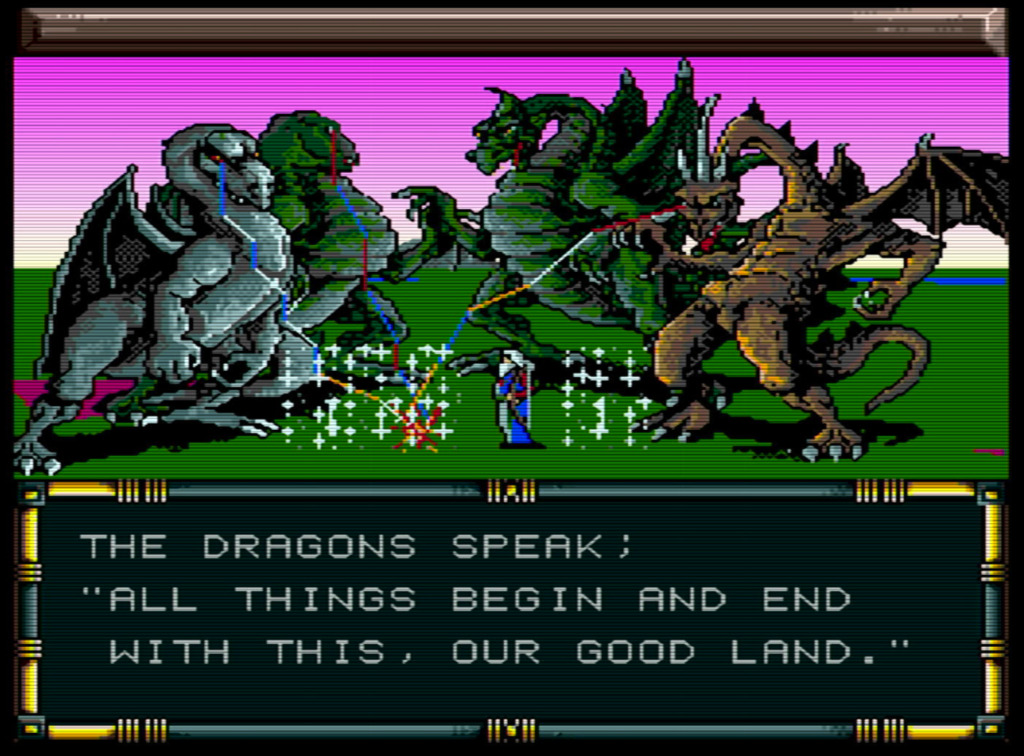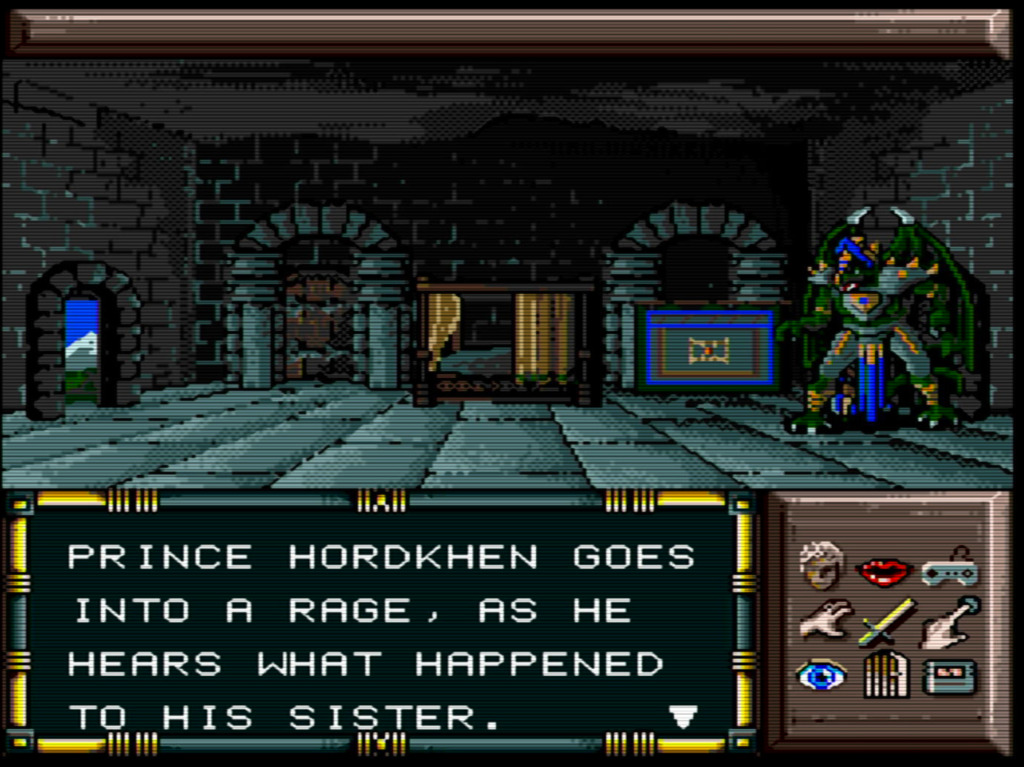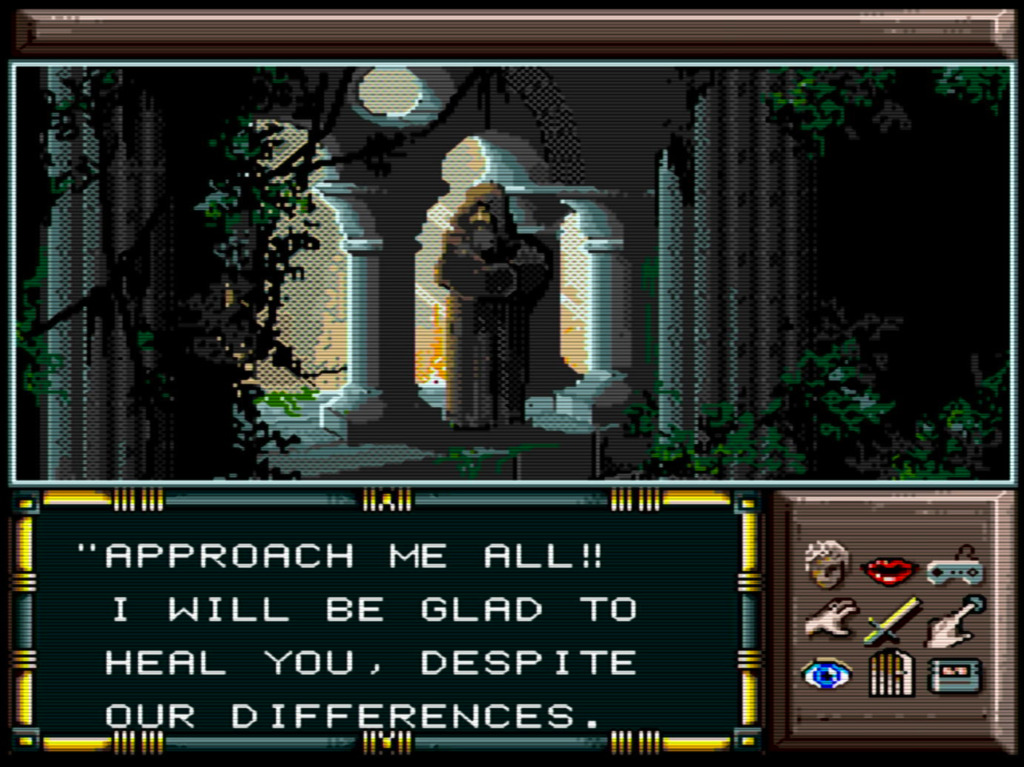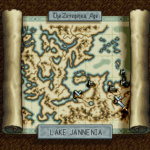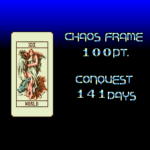As I promised Terra in my last post, I would be playing Drakkhen for the Super Nintendo. It’s 3D! It has dragons! You get to create your own party! And dragons! Well, there may be a couple bad eggs in the bushel.
I really knew nothing about this game. Although I was a huge Atari ST fan at the time and played a lot of RPGs on it, I missed it on its original platform (and I hear it was better there, too, though graphically it looks pretty similar). Still, it’s better late than never. I started hearing bits and pieces about it on retro RPG YouTube channels, and when I saw it at the Hartford RetroWorld Expo, at a reasonable price, I took the plunge and bought it.
It didn’t come with a manual or a cardboard insert to keep the cartridge from bouncing around in the box, so I got the manual off Fleabay and inserts from Amazon and then put it aside while I finished with Final Fantasy VI.
This game got bad reviews, so I wasn’t really expecting that much from the game. My first experience with the game was spending a long time creating characters, only for my entire party to die in the first couple minutes of the game. Game over.
My next time, I promised not to get that attached. I just used the standard starting party, and, following the advice of a walkthrough, headed straight to the first castle in front of me to start leveling up and gaining equipment.
While moving in the overworld, your party is not visible in Drakkhen. When your party has a random encounter (which can be wandering merchants, normal enemies, dragons, or actual constellations come to life), your party slowly trudges back on screen, bargains, fights, or dies horribly in screaming agony, respectively. Once done, they trudge slowly back off the screen.
This turns out to get really, incredibly annoying as the game progresses. Want to change equipment, cast a spell, save the game, set the battle actions? Five seconds of trudging onto the screen, do the thing, five seconds trudging back off again. Half the game — or more — is simply watching the characters trudge on and off the screen.
Dead characters are dead until you cast a revive spell that none of my characters were ever high enough level to cast, buy an overpriced potion from a random wandering merchant, or go to one of the four Anak temples scattered around the island, one in each of the island’s four biomes. I went, sometimes, half an hour or more with one or more dead characters as I hunted down an Anak temple. Thankfully, it is easy to run from overworld encounters. Especially those pesky wandering merchants. Have 10,000 jade — the game currency? The cheapest thing is 20,000. Okay, now you have 50,000? Sorry, the thing you want is 100,000 now.
Buying gear was more or less pointless, anyway. Since every re-entrance into a dungeon respawns all monsters and treasure, it’s easy enough to farm XP and gear. There are very few items which are “must haves”, and chief among those is the “Ghost Staff”, which confers permanent invisibility and is a godsend in every encounter. I was only able to find one, but the character who carried it was always the last one to die in any overpowered encounter.
The Plot
The story is fairly thin. You are humans, pulled from the human world to an island on the dragon world where eight Drakkhen princes and princesses are fighting over their island. Drakkhens are tall human/dragon crossbreeds, and hate the human world, and will destroy it if they can. The dragon gods want to save both the human and dragon worlds, and require the party to gather the eight Drakkhen gems, one of which is worn by each of the eight Drakkhen royalty on the island. Some will part with them willingly in the interest of peace, some will do so after you fulfill their request, and some will only give theirs up when you carve it from their forehead yourself.
There are eight castles, two to each of the four biomes, each containing a Drakkhen ruler. You will cross the island again and again following the plot around.
Fail, and dragons will go insane and destroy the human world. Succeed, and you will be sent back to the human world, and the way to the dragon world will be sealed, leaving your world safe.
Hardware
I played with the original cartridge and my original SNES controller from way back in the 90s, on the Analogue Super Nt console — this is a hardware-accurate SNES workalike which supports a wide range of customization in display, speed, and capability and is the gold standard in running Super Nintendo games on modern hardware. My boyfriend and I both have one.
The original controller is spongier than modern controllers, but it didn’t take long to get a hang for the controls and how they’re used in the game.
Graphics
By Super Nintendo standards, this game looks rather good. I hunted up screenshots from how it looked on the Atari ST, and it doesn’t look much different in this console port. The 3D effect is well done for the time, though the sprites used for the plants, temples, castles and monsters are in 2D only, so the whole 3D thing is a bit of a hack using rescaled sprites. Still, given the year, it isn’t bad. It’s not Starfox, but Starfox needed a whole different chip to do its 3D.
And unlike other games that do pseudo-3D, it doesn’t do any Mode 7 tricks. The overworld has rivers, lakes, marshes and so on, and though they are in truth nothing but colored polygons, they are drawn in a 3D space and the performance is pretty good.
While traveling at night, the starry sky will sometimes come to life and send a constellation to attack you, in what is probably one of Drakkhen’s coolest effects.
The Anak temples and other scripted encounters are done with static screens of better resolution, but again, it’s the SNES, so 320×200 pixels is all you get.
Drakkhen II
A sequel was announced and was far enough along to show screenshots to at least one gaming magazine of the time. It would have followed just one adventurer instead of four, and this would have allowed the graphics to be quite a bit better. The screenshots I saw made it seem like there was less emphasis on 3D, but it looks like the overworld would have still stretched the dimensions.
If it were playable now, I’d definitely move right on to Drakkhen’s sequel. Alas…
TL;DR
I’m not going to say you should play this vs the classic SNES Final Fantasy games, Chrono Trigger, or Earthbound, but it has some good stuff mixed in with the less good. Auto battling makes grinding easy, and with a little luck, you can become nearly invincible in normal encounters.
The plot isn’t anything special, but since the game lets you automate grinding to an extent, it doesn’t outstay its welcome. I don’t think I spent much more than ten hours in this game. Worth the money? Maybe not. Worth playing on an emulator? Sure, probably.
Final fight and the credits embedded below.

